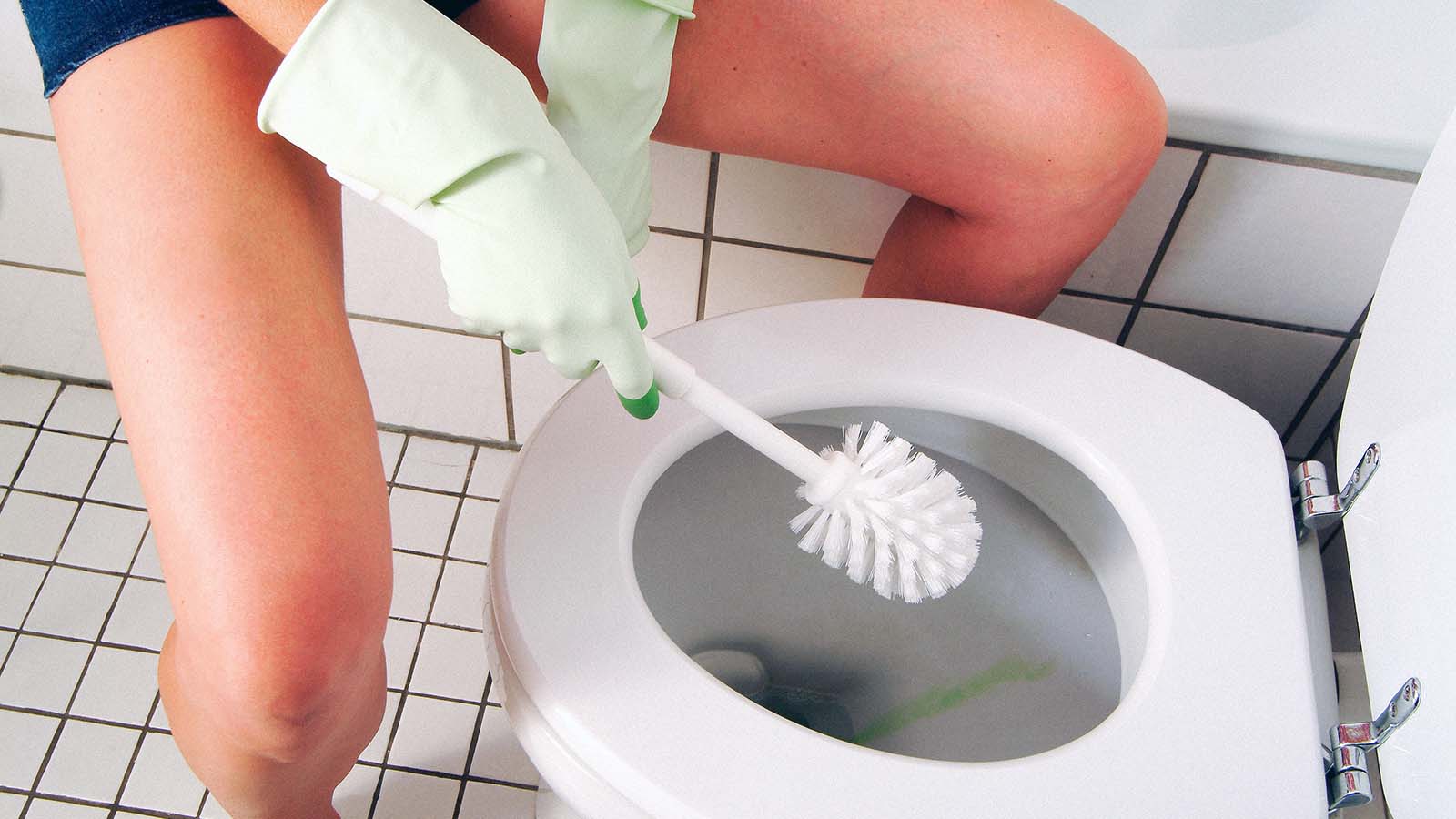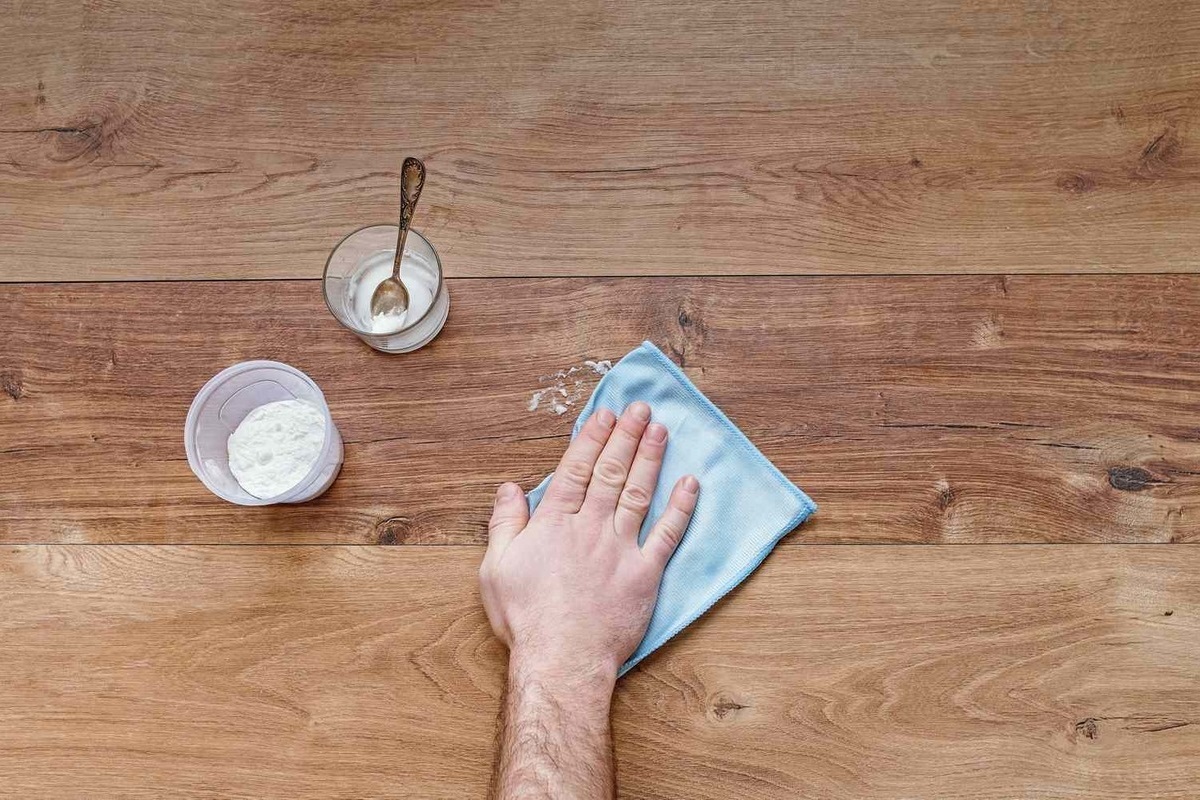Home>Latest Posts>What Causes Skid Marks In Underwear


Latest Posts
What Causes Skid Marks In Underwear
Published: July 31, 2023
Discover the latest trends and find out what causes skid marks in underwear. Stay stylish and informed with our expert insights.
(Many of the links in this article redirect to a specific reviewed product. Your purchase of these products through affiliate links helps to generate commission for Under-tec.com, at no extra cost. Learn more)
Table of Contents
Introduction
Skid marks in underwear can be an embarrassing and uncomfortable problem that many individuals face. These unsightly stains are often caused by various factors, including personal hygiene habits, dietary choices, digestive system issues, sweat and moisture, and even the choice of underwear itself. Understanding the underlying causes of skid marks can help individuals address and prevent this issue effectively.
Skid marks, also known as fecal staining, are typically brownish or yellowish stains that appear on the backside of underwear. They are usually caused by the presence of small amounts of fecal matter or residue that have not been properly cleaned away. While skid marks can occur to anyone, they tend to be more common among individuals who experience frequent bowel movements or struggle with digestive system issues.
Personal hygiene habits play a crucial role in the prevention of skid marks. Proper wiping technique and maintaining good overall cleanliness are essential. If inadequate hygiene practices are followed, traces of fecal matter can linger on the skin, leading to skid marks.
The food we consume can also contribute to the development of skid marks. Diets high in processed foods, refined carbohydrates, and low in fiber can result in loose stools or incomplete bowel movements. This increases the likelihood of soiling the underwear. On the other hand, a diet rich in fiber promotes regular bowel movements and reduces the chances of skid marks.
Some individuals may have underlying digestive system issues that contribute to the occurrence of skid marks. Conditions such as irritable bowel syndrome (IBS), Crohn’s disease, or chronic diarrhea can cause frequent and loose bowel movements, making it more difficult to maintain clean underwear. It is important for individuals experiencing these issues to seek medical advice to manage their symptoms effectively.
Understanding Skid Marks
Skid marks in underwear can be a source of embarrassment and discomfort for many individuals. Understanding the factors that contribute to the formation of skid marks can help address and prevent this issue effectively.
Skid marks, also known as fecal staining, are discolorations that appear on the backside of underwear. They are caused by the presence of small amounts of fecal matter or residue that have not been fully cleaned away. While skid marks can happen to anyone, they are more common in individuals who experience frequent bowel movements or have digestive system issues.
Personal hygiene habits play a crucial role in the prevention of skid marks. Proper wiping technique after using the toilet is essential to ensure thorough cleaning. It is important to wipe from front to back to prevent the transfer of bacteria from the anal area to the genital area. Additionally, maintaining good overall cleanliness, including regular showering, can help reduce the risk of skid marks.
Dietary choices can also impact the development of skid marks. Diets that are high in processed foods and low in fiber can result in loose stools or incomplete bowel movements. This increases the likelihood of soiling the underwear. On the other hand, a diet rich in fiber promotes healthy digestion and regular bowel movements, reducing the chances of skid marks.
In some cases, underlying digestive system issues can contribute to the occurrence of skid marks. Conditions such as irritable bowel syndrome (IBS), Crohn’s disease, or chronic diarrhea can cause frequent bowel movements and loose stools, making it more challenging to maintain clean underwear. It is important to consult a healthcare professional if you suspect any digestive system issues, as proper diagnosis and treatment can help manage symptoms and reduce the likelihood of skid marks.
Sweat and moisture can also play a role in the formation of skid marks. Excessive sweating, especially in the buttocks area, can lead to increased moisture, making it easier for fecal matter to adhere to the underwear. It is important to keep the genital and anal area clean and dry to minimize the risk of skid marks.
Lastly, the choice of underwear can contribute to the occurrence of skid marks. Tight-fitting underwear and fabrics that do not allow proper airflow can trap moisture and increase the likelihood of stains. Opting for underwear made from breathable materials, such as cotton, and choosing styles that provide adequate room and ventilation can help reduce the formation of skid marks.
By understanding the causes of skid marks, individuals can take proactive steps to prevent them. Adopting proper hygiene practices, making dietary adjustments, seeking treatment for digestive system issues, managing sweat and moisture, and choosing the right underwear can all contribute to reducing skid marks and maintaining a clean and comfortable undergarment environment.
Personal Hygiene Habits
When it comes to preventing skid marks in underwear, personal hygiene habits play a crucial role. Proper hygiene practices can help ensure cleanliness and reduce the likelihood of staining.
One of the essential hygiene practices is effective wiping technique after using the toilet. It is important to use toilet paper or wet wipes to thoroughly clean the anal area. Wiping from front to back is crucial to prevent the transfer of bacteria from the anus to the genital area, which can lead to infections and soiling of underwear.
In addition to wiping, regular showering or bathing is vital to maintain overall cleanliness. Taking a shower at least once a day, paying close attention to the anal and genital area, helps wash away any residual bacteria or fecal matter. It is important to use a gentle cleanser and warm water to avoid skin irritation.
For individuals who are prone to sweating or have an active lifestyle, changing underwear more frequently can help prevent skid marks. Sweat and moisture in the buttocks area can contribute to the adherence of fecal matter to the underwear. Changing into clean and dry underwear throughout the day can reduce the chances of staining and promote better hygiene.
Choosing underwear made from breathable materials, such as cotton, is also beneficial for personal hygiene. Cotton allows for better air circulation and moisture absorption, reducing the likelihood of sweat buildup and the formation of skid marks. Avoiding tight-fitting underwear can also help minimize friction and increase comfort, further reducing the risk of staining.
Maintaining good overall hygiene habits, such as trimming or shaving the anal area, can be a personal preference for some individuals. This can make cleaning the area easier and more effective, reducing the chances of leaving traces of fecal matter behind.
Lastly, it is important to always keep a supply of clean and well-fitting underwear. Regularly washing and replacing underwear ensures that there is no buildup of bacteria or fecal matter residue that can contribute to skid marks. It is recommended to wash underwear with mild detergent and avoid using harsh chemicals or fabric softeners that can irritate the skin.
By incorporating these personal hygiene habits into daily routines, individuals can significantly reduce the occurrence of skid marks and maintain a clean and comfortable underwear experience.
Dietary Factors
The food we consume plays a significant role in our digestive health and can have an impact on the occurrence of skid marks in underwear. Certain dietary factors can contribute to loose stools or incomplete bowel movements, increasing the chances of soiling the underwear.
Diets that are high in processed foods, refined carbohydrates, and low in fiber can contribute to the development of skid marks. These types of foods are often low in nutritional value and can result in loose stools, making it more difficult for the body to fully eliminate waste. Incomplete bowel movements can leave behind traces of fecal matter, leading to the formation of skid marks.
On the other hand, a diet rich in fiber can promote regular bowel movements and reduce the risk of skid marks. Fiber adds bulk to the stool, making it easier to pass through the digestive system. This helps ensure more complete elimination and reduces the likelihood of residue remaining in the anal area.
Some excellent sources of dietary fiber include fruits, vegetables, whole grains, legumes, and nuts. Incorporating these foods into the daily diet can improve bowel regularity and reduce the chances of skid marks. It is recommended to aim for at least 25-30 grams of fiber per day for optimal digestive health.
Probiotic-rich foods can also be beneficial in maintaining a healthy gut and preventing digestive issues that contribute to skid marks. Foods such as yogurt, kefir, sauerkraut, and kimchi contain beneficial bacteria that support proper digestion and bowel movements. Including these probiotic foods in the diet can help promote a healthy digestive system and reduce the likelihood of skid marks.
In addition to fiber and probiotics, it is important to stay properly hydrated to support healthy digestion. Drinking an adequate amount of water throughout the day helps soften the stool and move it through the digestive system more efficiently. Dehydration can lead to harder and drier stools, which can be difficult to eliminate completely and increase the risk of skid marks.
It is important to note that dietary changes may take some time to produce noticeable effects on bowel movements and skid mark prevention. It is recommended to make gradual changes to the diet and give the body time to adjust to the new eating habits.
By adopting a well-balanced diet that includes fiber-rich foods, probiotics, and adequate hydration, individuals can support healthy digestion and reduce the chances of experiencing skid marks in their underwear.
Digestive System Issues
Skid marks in underwear can be a common occurrence for individuals with underlying digestive system issues. Conditions such as irritable bowel syndrome (IBS), Crohn’s disease, chronic diarrhea, or other gastrointestinal disorders can contribute to frequent bowel movements and increased difficulty in maintaining clean underwear.
Irritable bowel syndrome (IBS) is a common digestive disorder that can cause abdominal pain, discomfort, and changes in bowel habits. Individuals with IBS may experience alternating episodes of diarrhea and constipation, making it challenging to achieve thorough cleaning after bowel movements. The inconsistent bowel movements can result in skid marks.
Crohn’s disease is a chronic inflammatory bowel disease that can affect any part of the digestive tract. It can lead to symptoms such as diarrhea, abdominal pain, and frequent bowel movements. Inflammation and ulcerations in the intestinal lining can contribute to loose stools and difficulty in maintaining clean underwear.
Chronic diarrhea, whether caused by an infection, inflammation, or other underlying causes, can also increase the chances of skid marks. Frequent loose stools make it harder to achieve complete elimination and can result in fecal residue remaining in the underwear.
If you suspect that an underlying digestive system issue is contributing to the occurrence of skid marks, it is essential to consult with a healthcare professional. Proper diagnosis and treatment are crucial in effectively managing the condition and reducing the frequency of skid marks.
Your doctor may recommend lifestyle changes, dietary adjustments, medication, or other treatment options depending on the specific condition. Managing the underlying digestive issue can help regulate bowel movements, reduce loose stools, and minimize the likelihood of soiling the underwear.
In some cases, doctors may also recommend the use of protective undergarments, such as pads or incontinence briefs, which can provide an extra layer of protection against skid marks. These products can help individuals with digestive system issues feel more comfortable and confident in managing the occasional accidents that may occur.
It is important to remember that each individual’s experience with digestive system issues may vary, and it may take time to find the most effective treatment plan. Open communication with your healthcare provider and adherence to their recommendations are key in managing the condition and minimizing the impact on your daily life.
Sweat and Moisture
Sweat and moisture can contribute to the formation of skid marks in underwear. Excessive sweating in the buttocks area, especially during physical activity or hot weather, can create an environment that is conducive to the adherence of fecal matter.
When we sweat, moisture is produced, and this moisture can mix with any traces of fecal matter present in the anal area. The combination of sweat and fecal matter can result in stains on the underwear, commonly known as skid marks.
To minimize the impact of sweat and moisture on the occurrence of skid marks, it is important to keep the genital and anal area clean and dry. Regular showering or bathing is crucial to wash away sweat and any potential residue. Paying extra attention to these areas and using a gentle cleanser can help maintain proper hygiene.
Avoiding tight-fitting underwear and choosing breathable materials, such as cotton, can also help reduce the effects of sweat and moisture. Cotton allows for better air circulation and absorption of moisture, reducing the likelihood of excessive sweat buildup and the formation of skid marks.
During physically demanding activities or on hot days, it may be beneficial to change into clean and dry underwear more frequently. This helps minimize the chances of sweat and moisture lingering and contributing to soiling the underwear.
In addition to personal hygiene practices, using absorbent pads or liners can provide an extra layer of protection against moisture and skid marks. These products can help absorb sweat and keep the underwear dry, reducing the likelihood of stains.
It is important to note that while managing sweat and moisture is important in minimizing the occurrence of skid marks, it may not be possible to completely eliminate them, especially during particularly intense or sweaty activities. However, implementing good hygiene practices and making appropriate clothing choices can significantly reduce their occurrence.
Overall, staying clean and dry in the genital and anal area, choosing breathable underwear materials, changing clothing when necessary, and using absorbent products can all contribute to minimizing the impact of sweat and moisture on skid marks in underwear.
Choice of Underwear
The choice of underwear can play a significant role in the occurrence of skid marks. Factors such as fabric, fit, and style can all contribute to the likelihood of staining.
One important consideration is the fabric of the underwear. Opting for breathable materials, such as cotton, can help promote better air circulation and reduce the buildup of sweat and moisture. Cotton allows for improved moisture absorption, which can help keep the genital and anal area dry, minimizing the chances of skid marks.
Tight-fitting underwear can increase friction and trap moisture, making it easier for skid marks to occur. Choosing underwear with a comfortable fit that allows for proper ventilation is crucial in reducing the likelihood of stains. Opting for styles that provide adequate room in the buttocks area can also help minimize contact between fecal matter and the underwear.
In addition to fabric and fit, the style of underwear can affect the occurrence of skid marks. Underwear with a higher back rise can provide more coverage and support, reducing the risk of stains. Some individuals also find that underwear with a double-layered or reinforced back panel can be beneficial in preventing the transfer of fecal matter to the fabric.
It is important to regularly replace old or worn-out underwear. Over time, fabric can become frayed or lose its elasticity, which can increase the likelihood of stains. Keeping a supply of clean and well-fitting underwear ensures that there is no buildup of bacteria or residual matter that can contribute to skid marks.
For individuals who are prone to sweating or have active lifestyles, wearing moisture-wicking underwear can be beneficial. These types of underwear are designed to draw moisture away from the skin, keeping you dry and reducing the chances of sweat-related skid marks.
Lastly, maintaining proper hygiene practices while wearing underwear is important. Effective wiping technique after using the toilet and regular showering can help minimize the chances of soiling the underwear, regardless of the fabric or style chosen.
By considering factors such as fabric, fit, style, and hygiene habits, individuals can make informed choices when it comes to selecting underwear that reduces the likelihood of skid marks. Taking proactive steps in choosing the right underwear can contribute to a cleaner and more comfortable undergarment experience.
Treatment and Prevention
Dealing with skid marks in underwear can be frustrating, but there are several treatment and prevention strategies that can help individuals manage this issue effectively.
If skid marks are a recurring problem, it is essential to assess personal hygiene habits. Proper wiping technique, ensuring thorough cleaning from front to back, is crucial. Additionally, maintaining good overall hygiene, including regular showering and changing into clean underwear, can help prevent the occurrence of skid marks.
Dietary adjustments can also play a significant role in preventing skid marks. A diet rich in fiber, obtained from sources such as fruits, vegetables, whole grains, and legumes, can promote regular bowel movements. This can reduce the chances of incomplete bowel movements and the consequent staining of underwear.
Individuals with digestive system issues, such as irritable bowel syndrome (IBS) or Crohn’s disease, should seek medical advice for proper diagnosis and treatment. Managing these conditions can help regulate bowel movements and reduce the frequency of skid marks. Healthcare professionals may recommend lifestyle changes, medication, or other strategies to alleviate symptoms and improve bowel regularity.
Keeping the genital and anal area clean and dry is vital in preventing skid marks. Regular cleaning during showering, gentle drying, and wearing breathable underwear made of materials like cotton can minimize the effects of sweat and moisture, reducing the likelihood of stains.
Choosing the right underwear is another important aspect of prevention. Opting for breathable fabrics, such as cotton, and selecting a comfortable fit can help reduce friction and moisture buildup. Regularly replacing old or worn-out underwear is also essential to maintain hygiene and minimize the risk of skid marks.
In some cases, using absorbent pads or liners can provide additional protection against skid marks. These products help absorb sweat and moisture, ensuring that the underwear remains clean and dry.
It is important to note that skid marks may not be completely preventable in all circumstances. However, by implementing these treatment and prevention strategies, individuals can significantly reduce the occurrence of skid marks and maintain clean and comfortable underwear.
If skid marks persist despite implementing these measures or if they are accompanied by other concerning symptoms, it is advisable to consult with a healthcare professional for further evaluation and guidance.
Conclusion
Skid marks in underwear can be an embarrassing and uncomfortable problem that many individuals face. They are typically caused by factors such as personal hygiene habits, dietary choices, digestive system issues, sweat and moisture, and the choice of underwear. Understanding these underlying causes is essential in addressing and preventing this issue effectively.
Personal hygiene habits, including proper wiping technique and regular showering, play a crucial role in preventing skid marks. Maintaining good overall cleanliness and changing into clean underwear can also help minimize the chances of staining.
Dietary factors, such as consuming a fiber-rich diet and staying hydrated, can promote healthy digestion and reduce the risk of skid marks. Additionally, managing underlying digestive system issues, with the guidance of healthcare professionals, can help regulate bowel movements and prevent frequent soiling of the underwear.
Sweat and moisture can contribute to the formation of skid marks, so it is important to keep the genital and anal area clean and dry. Choosing breathable underwear made of materials like cotton and changing into clean, dry underwear as needed can help minimize the effects of sweat and moisture.
The choice of underwear also plays a significant role in preventing skid marks. Opting for breathable fabrics, comfortable fits, and styles that provide adequate coverage and support can help reduce the likelihood of staining. Regularly replacing worn-out or old underwear is important to maintain hygiene and minimize the risk of skid marks.
While skid marks may not always be completely preventable, implementing proper hygiene practices, making dietary adjustments, managing underlying health conditions, and choosing the right underwear can significantly reduce their occurrence. It is important to remember that seeking medical advice and communicating with healthcare professionals can provide tailored guidance and support in dealing with skid marks.
By adopting these strategies, individuals can take proactive steps to manage skid marks, maintain clean and comfortable underwear, and regain their confidence and peace of mind.










